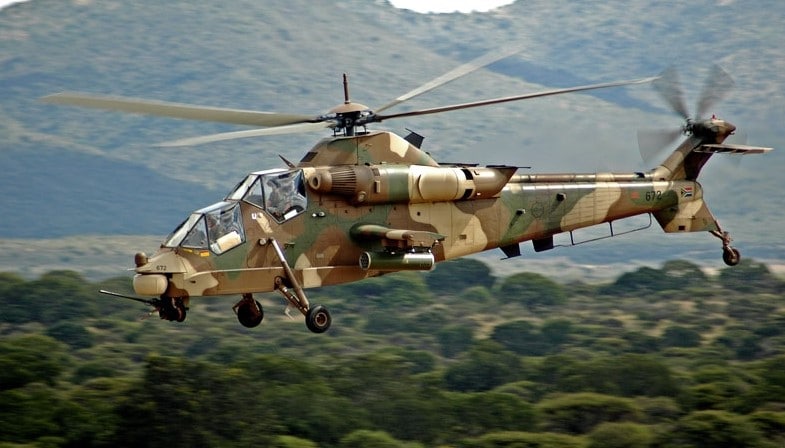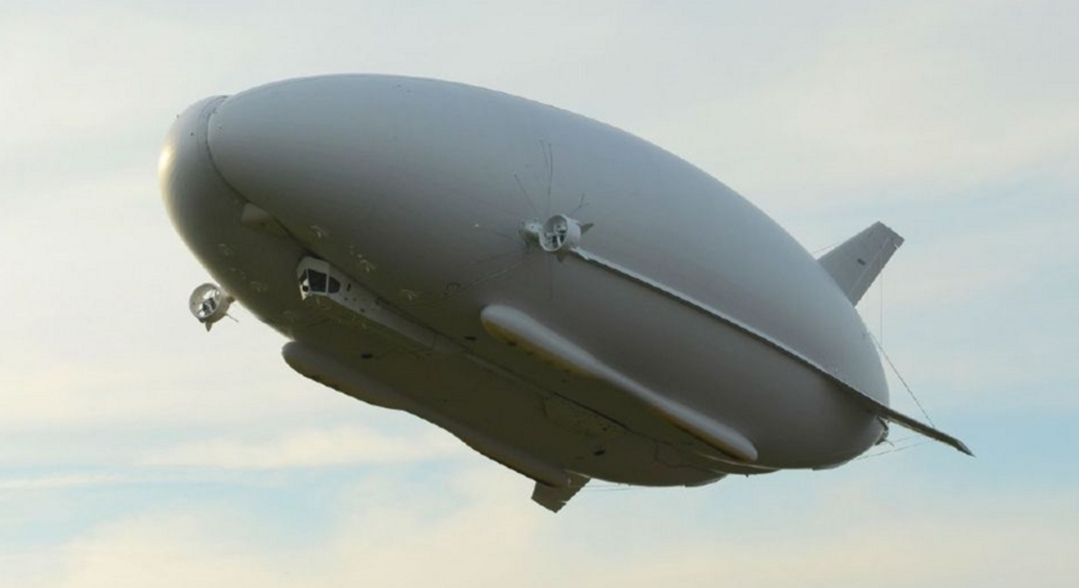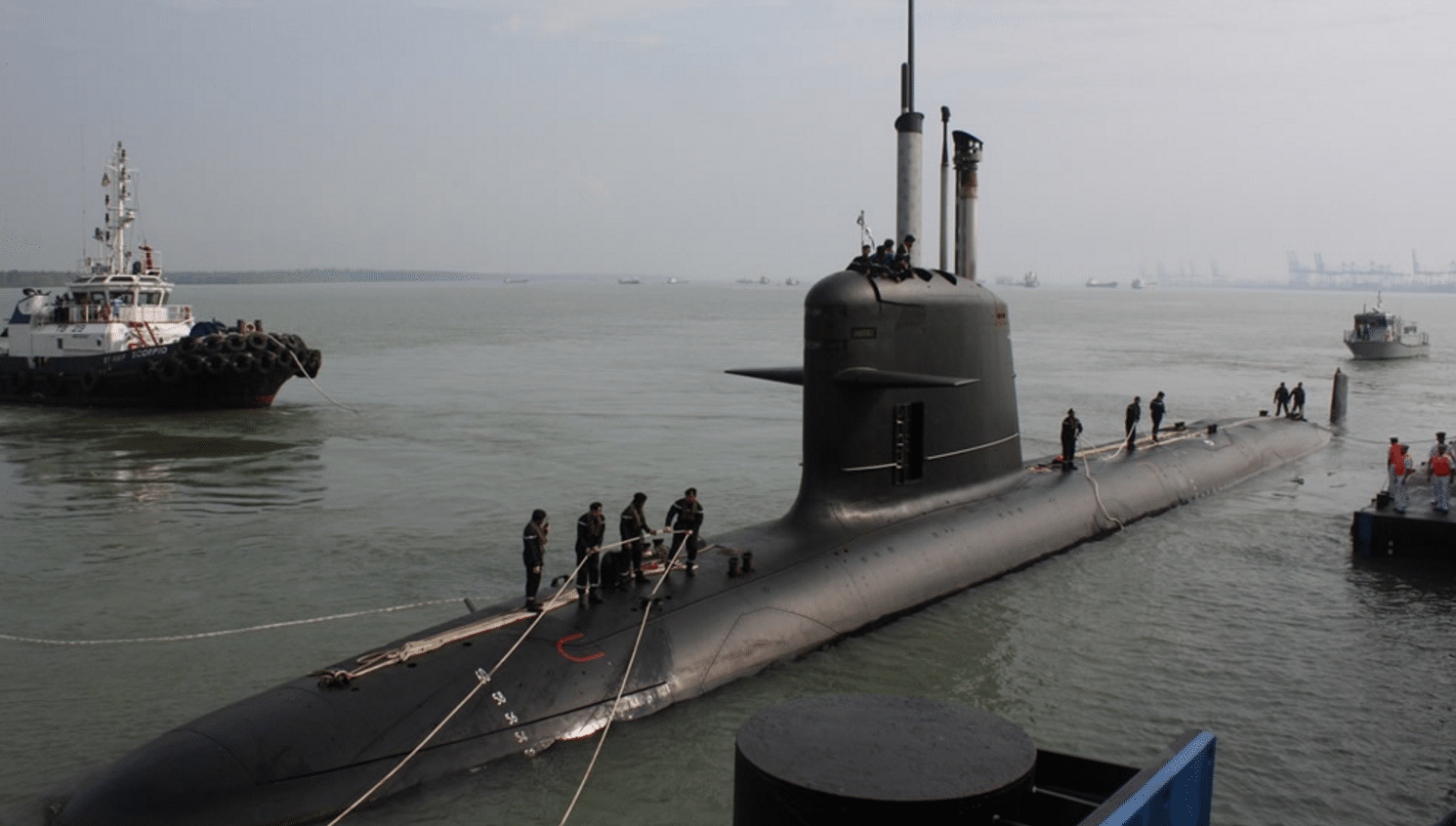2011Views 14Comments

Denel Aviation will undertake study for developing Rooivalk Mk2
In its annual report for 2016, Denel Group stated that it “has been commissioned to do an obsolescence and supportability study to inform both the upgrade of the current Rooivalk Mk1F baseline and future development of a Rooivalk Mk2 for both local and export markets.”
Discussions are underway between Denel Group and the South African Air Force (SAAF) and Department of Defence (DoD). If successfully brought into the development stage, the Rooivalk Mk2 would stand as the flagship program for the South African defence industry.
Notes & Comments:
Denel Group is pursuing the Rooivalk Mk2 program in response to increasing interest from abroad in the attack helicopter, especially since its deployment to the Democratic Republic of Congo (DRC) by the South African National Defence Force (SANDF). In the DRC, the Rooivalk conducted intelligence, surveillance, target acquisition and reconnaissance missions, particularly in high-threat areas.
While the Rooivalk Mk2 will retain the airframe and engines of the Rooivalk Mk1, it will feature a new electro-optical and infrared (EO/IR) sensor as well as enhanced payload and survivability (Defence Web).
The Rooivalk platform is powered by two Turbomeca (Safran) Makila 1K2 turboshaft engines – the same engine type is shared by the Airbus Helicopters H215 Super Puma transport helicopter. The Rooivalk’s main gearbox and main and tail rotor systems are also from the Airbus H215.
While there were problems in securing the core components from Eurocopter for export purposes in the past (which had pushed its Tiger platform in the same markets Denel was pursuing with the Rooivalk), Denel seems to be making progress with Eurocopter’s successor Airbus Helicopters on this front. At the 2016 Africa Aerospace and Defence Exhibition (AAD), Denel Aviation and Airbus Helicopters signed a memorandum-of-understanding (MoU) to collaborate on modernizing the SANDF’s Rooivalk Mk1 fleet.
At AAD 2016, South Africa’s Secretary of Defence noted that Denel would be looking at producing “about 60” Rooivalk Mk2s. This may be the number required to make the Rooivalk Mk2’s development feasible, and Denel appears to be aiming to secure major export customers. As incentive, Denel is pitching transfer-of-technology for local production and maintenance, repair and overhaul (MRO) to prospective buyers.
Regarding technology transfers, Denel said (via Defence Web):
“Denel Aviation is interested in seeking partners and clients in the development of a new generation Rooivalk…In this process, significant opportunities exist for technology transfer as well as production and MRO participation.”
“Through a joint venture programme of industrial participation and transfer of intellectual property, an indigenous attack helicopter production, support and upgrade/modification capability can be established.”
Although the attack helicopter market has grown in terms of suppliers, the Rooivalk platform is in the less saturated space of heavyweight platforms. Today, only two countries offer heavyweight attack helicopters – the U.S. (AH-64) and Russia (Mi-28NE and Ka-52). Denel’s decision to retain the airframe and engine will help in controlling cost; commonality with the affordable Super Puma should be beneficial in terms of cost as well, especially since the Super Puma (and Makila) benefit from scale and global adoption.
Denel’s main challenge will likely stem from securing a launch buyer and funding partner, especially one that can provide a large order to anchor the program. Many prospective users (e.g. India, Algeria, Egypt, etc) have gone on to adopt the AH-64, Mi-28NE or Ka-52.
In March, the South African government signed a defence MoU – “Defence and Defence Industrial Cooperation” – with Pakistan. On the back of this MoU, Denel could potentially try aiming at Pakistan Army’s ongoing attack helicopter program. However, to elicit meaningful interest Denel would have to strongly emphasize flexible transfer-of-technology (for MRO, co-production, access for configuring and arming the platform at-will, etc) and use of readily available and tested core components, such as Safran turboshaft engines and Airbus Helicopters dynamic components.



14 Comments
by Syed Arbab Shah
How effective are the PA assault helicopters going to be, when the IA operates under the cover of S 400 and Spyder SAMs?
An effective electronic jamming system is required that can blind the terminal seekers of these SAMs.
by bill
The costly S400 if I am not wrong is much costly and not to be used against attack helicopters in battlefield. It shall be exclusively to counter fighter jets on deep penetration missions and to counter cruise/ballistic missile attacks on strategic assets.
Meanwhile considering the Denel past track record/capabilities it is evident that these MK2 version shall have necessary gadgets to counter low to medium level SAMs.
by Headstrong
Considering that Denel was under a serious cloud given their ill-advised takeover of BAE Land Systems in 2015, their subsequent cash flow problems, trouble with their sub-contractors, their ‘temporary’ management after the suspension of their top honchos, the controversial and ill-fated VR Laser Asia deal and its general state of health, I’m surprised that Denel has any credibility left.
Unless, of course, things have changed over the past few months
by Andrew Coetzee
Rooivalk can fly low and use terrian to masks it approach. Hell the s400 it self could be come the target of a rooivalk tgat pops over a hill and fires a ATGM at them. SAM systems like the S400 and patriot are typically meant for meduime to high flying target’s. Fly a few feet above the ground a S400 is not a threat.
by Andrew Coetzee
I dont think the MK will have any thing above the MK1. It alll ready got a low thermal signuter, Laser warning reciver, Radar warning receiver and missile aprouch warning receiver and chaff flare launcher. Maybe it Carry more like jammers but i dont think it is needed.
by Mikaal Hassan
I have got a question what if instead of getting AH -1z viper for a almost 1 billion dollar why Pakistan army didn’t go for South African roovialk …it could have been a similar project like jf17 start from basic and keep upgrading ….why spend 1 billon dollar on usa helicopters which you can’t even upgrade now specially With India getting apache …plus all three services could have added puma helicopters by combining both helicopters as a package from South Africa too saving money
by Stan
With transfer of technology ….yes it would be a win win for Pakistan,you have to keep your eye on the ball and the major threat to Pakistan would be a blitzkrieg by India across the plains of punjab and Sindh……they may start the blitzkrieg but we would end it without going Nuclear
by Aaif khan
It would be very foolish if Pakistan now does not establish MRO facilities for its attack helis. If not now than when? I assume attack helis are vital against advancing Indian armoured. So large acquisition & heavy weight platform that could fly at high altitude and longer ranges is expected.
Rooivalk seems to be a good platform. Unlike U.S or russian platform PA could have configured Rooivalk at her will. MW radar from Turkey. Don’t understand why they went on to Ah1z? Maybe the deal is supposed to be partly finance by US? I don’t know.
Lol, I am confuse and dying somone pls help me. I am taking too much load on my low IQ.?
by Superior Shakeel
it’s because they are being bought from CSF or coalition support fund which US gives to Pakistan so they are practically free along with 1000 hellfire missiles pretty good deal if you ask me.
And we don’t have the necessary industry to absorb transfer of technology or need of one or the funds to support such initiative without any significant prospect of sale it’s sunken costs PA has always keen to induct proven and readily available weapons as it suits our needs Tot just inflates cost unless not used in other projects for which we simply don’t have funds.
by Aaif khan
Hello ‘Superior Shakeel, how’s the weather in your country?
I wonder what superior Technology you think are involved in Helis that cannot be absorb by PAC when PAC is already producing and overhauling fighter and trainer aircraft?
I believe if funds are available than it will not a big deal since technical knowhow of require machinery base is available.
I have no knowledge of military equipment, so your point made me bit curious. Your answer will be Awaited.
by Superior Shakeel
Yes the US deal was completely financed by US along with 10 year support and spares and training plus 1000 hell fire missiles we would be utterly bananas to deny that deal
Besides rooivalk is in development/ conceptual stage and SA is looking for a partner with surplus cash who can fund the development and is willing to take the risk which we don’t have and even if we had some surplus funds for this we will not partner with SA because this heli will heavily rely on western OEM especially the engine which can be blocked or sanctioned lickety split much like the altay tank and other Turkish product they are all heavily sanction prone.
that’s not how Pakistan operates we have immediate requirement and we always go for the tested & proven and readily available and if it’s free with support and ammo than even better lol
by Aaif khan
By your point of view. And the way PA is hunting for helis(ignoring platform like roovailk and Russian) it seems that PA is looking to secure local production.
Not sure about the engine. But subsystem could have been secured from Turkey. Well, Turkey is looking to develop local engine for T-129. Let’s see if Pak goes for it.
by Superior Shakeel
Well for starters we don’t have any turbofan engine , avionics , radar, semiconductor manufacturer i mean for crying out loud we don’t have a steel mill to make some friggin steel and other alloys.
The flaghsip project of PAC is jf17 which uses a chinese radar Chinese avionics and Russian engine and parts of it’s body are manufactured in a European country which I can’t tell you they are finally assembled and manufactured in PAC the trainer aircraft you alluded to is assembled from CKD or semi knocked down kits it’s license manufacturing of SAAB safari trainer go look it up.
And jf 17 was more a geopolitical necessity because it didn’t bring much in capability or performance against our F-16 but after kargil PAF knew instinctively that they can be sanctioned at the whims of Yanks thus we needed our own bird.
While jf-17 is still maturing and one day will reach parity with F-16 or maybe exceed it but it’s a long way to go but it’s our own bird we control the spares or rather make them and other are supplied by china which is not prone to sanctioning.
We can mate any weapon to Thunder we control the source code and we can fly it freely and do anything with it unlike the F-16 which have many constraints especially the 18 block 52s we have.
Now for addressing second part of your question if funds are available well if funds are available we can do all that stuff but biggest problem is that we really don’t have much funds this has almost always been the case we always had to make hard choices.
I mean aren’t exactly a cash rich nation never have been maybe in the early 50s and 60s but it has been completely downhill since then and we have really low forex reserves the ishaq dollar inflates the forex figures by including even the outgoing amount and taking loans at a very high rate just to show good account books we barely scrape by with our international payments. 🙁
But if hypothetically we had funds for this it will begin by first setting up
1)Quality Universities or institutes with focus on aviation and it’s related fields.
2)then respective industries like having proper steel/alloy manufacturers / forgers
3) research into electronics maybe even setup a small scale electronic fabrication unit for all our semiconductor needs for all our civilian and military use.
4)extensive wind tunnel and testing facilities needs to be setup to develop the project from ground up
5)a aviation certification agency to certify,test and validate the aircraft as fly worthy.
And some other steps.
by Superior Shakeel
At the end of the day the Chinese heli will win and it will be our mainstay I don’t think there is any chance of turkey getting through unless they offer it with huge subsidy the avionics and engine are all Western and EU property and they way turkey and erdogan is joining the EU will be more hostile towards turkey.
I mean they even denied the engine for a tank so good luck with aero engines as for turkey developing an engine for helis well let them build one for a tank first maybe then go for aero engines they will definitely get there but are a decade away from that and our requirements are urgent I’ll avoid putting all our eggs in Turkish basket we should stick with the Chinese and support the project with our funds just like India does with russia.